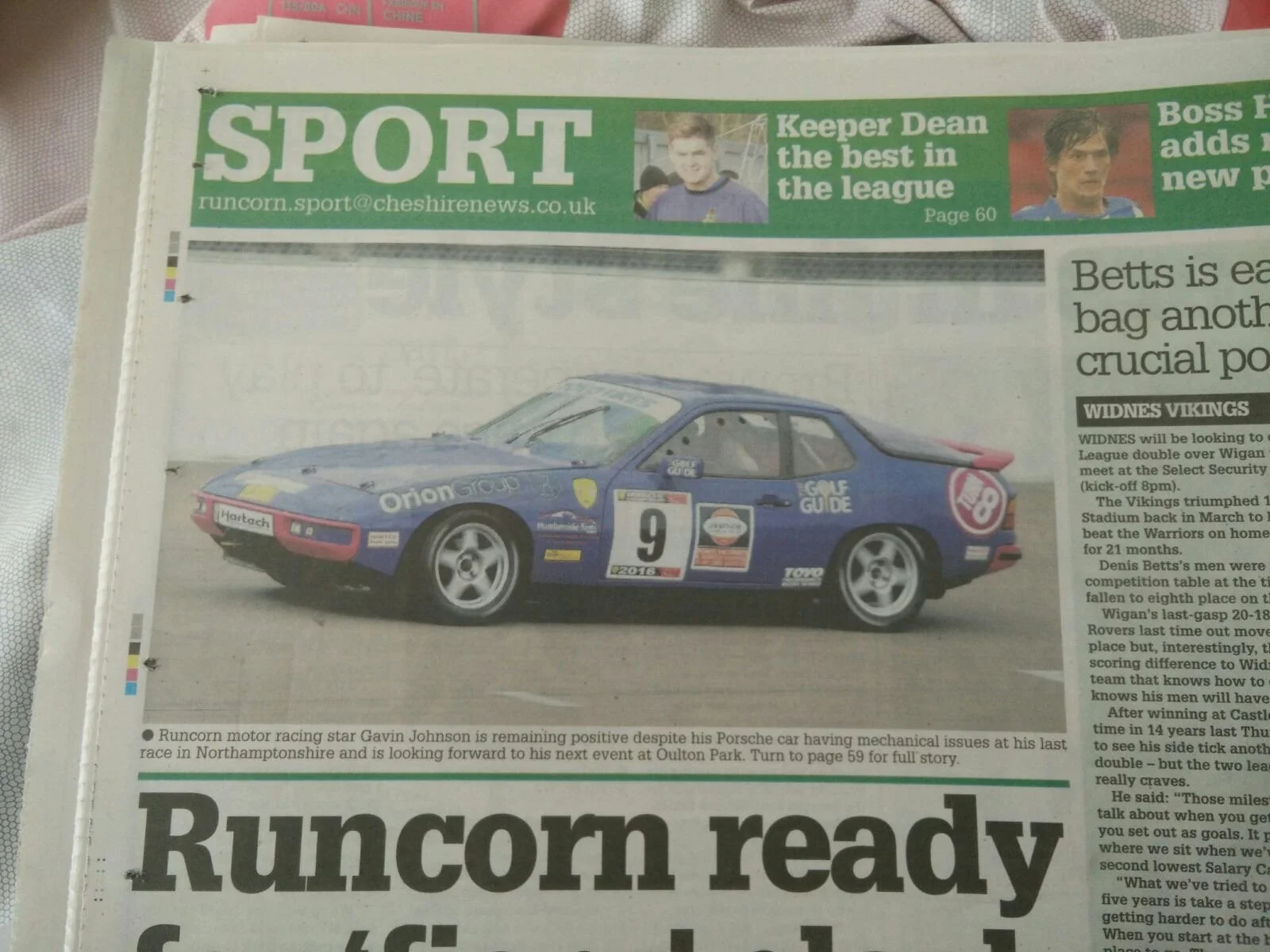How to write a press release for your racing
Getting press coverage for your racing career is a great way to reach a wider audience and build authority within motorsport and your niche. Press coverage can be obtained in a number of ways but if you want to be proactive about a piece of news, you can create a press release.
This is a simple news story you write up to send out to the press. It gives all the important information on the story, quotes from key people (you initially, but may also include sponsors and team members), and details of images.
A journalist will take your press release and write it up into a full story. They might request more information or an interview, or some might just take it word for word.
Journalists are busy; a poorly written press release is going to get thrown straight in the bin. Try not to give them more work, offer a workable story instead. Here are some tips to write a compelling press release and get more coverage (and a link, if you need our full PR course).
Get the format correct
To make life easier for you and to get all the important information across for the journalist, a press release should follow a certain format
The headline
Think as if you were writing a headline for your key publication. You need to get the information across in a compelling way. There’s a knack to this but make sure your headline is to-the-point but also tells the story. Here are some examples;
Local and motorsport press
Russell wants F1 future beyond 2021 decided by summer break
Trice wins all three races at Brands Hatch in Ginetta GT Academy
Verschoor retains F2 seat with MP Motorsport for Baku
National newspapers
‘The support has left me speechless’: how Sarah Moore returned to W Series
Police officers with PTSD offered motor racing therapy
From filming James Bond to first taste of Formula One
Trade magazines
Orion Rail joins Turn Eight Racing
JCB sponsors Formula One team
Amazon Web Services to become global technology provider to SRO motorsports
Business magazines
Toyota races world’s first hydrogen-powered race car
How a 16-year old from Pretoria started an export business in a garage – and changed bike racing
Lifestyle magazines
Finding personal confidence gave me sporting success
My fitness journey turned me into a racing driver
Meet the drivers that are changing motorsport
10 millennials tell us about their secrets to happiness
You’ll see a difference between the headlines for each type of magazine. Bear this in mind. How you approach a national newspaper will be very different to how you’ll approach your local paper.
The first paragraph
This is perhaps the most important part of your press release as it’s your chance to share all the important information in one place. Within the first sentence or two, you need to include;
Who
What
When
Where
Why
How
Let’s say you’ve just partnered with a charity, your first paragraph might read:
Norfolk-based racing driver Joe Bloggs has partnered with the charity Good Things to offer STEM talks and training in local schools. The first talk will take place at Norwich School in late June and will inspire students to look at engineering careers within motorsport.
Who – Joe Bloggs and Good Things
What – STEM talks
When – June
Where – Norfolk and Norwich School
Why – Inspire children
How – Talks and training through the partnership
Tell the rest of the story
Think of your press release like an upside-down triangle. You give all the information up front but as you then go into the rest of the story, you begin to break it down to give more information. Using the example above, after you’ve presented the main facts, next you might want to go into who Joe Bloggs is and how the partnership came about.
From there, dig deeper into the talks and why they’ll be important then perhaps finish with the details of the talk at the Norwich school.
Include quotes
It’s important to include quotes from key people. This is something written in your own voice as if you’d given an interview to the press. For example:
Joe Bloggs says: “i’m thrilled to partner with Good Things to deliver these STEM talks. I’ve wanted to give back to local schools for a while and inspiring kids to pursue an engineering career is a great way to do it.”
There should always be a quote from you but consider including quotes from sponsors and other parties, too.
Jane Williams, CEO of Good Things, says: “Joe is a fantastic partner to have onboard for this project. His knowledge of motorsport and how a race car works is a great platform from which to teach kids.”
Hannah Smith, Head Teacher at Norwich School echoes this, she says: “We’re really excited to have Joe and his car visit us. This is a great chance for students to see what goes into an engineering career and could even inspire the next generation of racing drivers.”
Speak to your partners for quotes, most will be happy to do it over email. If you know a partner well, feel free to write a short quote for them and ask them to approve it.
Adding Images
Within the press release include a simple line that offers rights-free images. If you send an image that needs to be credited to a photographer, make this clear in your email and in the filename of the image in question. You can then upload these to Dropbox for easy sharing – a link is always preferable to attaching several large files to an email.
Please find a selection of hi-res images here: [dropbox link]
Notes to editors
This is a titled section at the end of the press release that gives a little more information on those mentioned in the story. These details might not necessarily be part of the story you’re trying to tell but it helps the journalist understand the wider context. For example:
Joe Bloggs is a racing driver competing in Britcar. A championship-winning racing driver, Bloggs is excited for the challenge this step up will bring after two successful seasons in the Civic Cup. On top of his racing, Bloggs teaches race car engineering through his YouTube channel Blogg’s Car Blog.
Good Things is a UK charity that offers skills training to students of all ages. It’s heavily involved in STEM education to help close the skills gap present in these industries.
Contact details
Finish your press release with details of who to contact if the journalist needs more info or would like an interview.
For further information or to request an interview, please contact Joe Bloggs on [number] or [email].
The person to contact could be you, an assistant, or a generic email address, depending on who you have supporting you.
This format will be pretty standard no matter who you are contacting but the content of the press release might vary depending on the publication you are targeting.
Think about the angle
Continuing with our example, the angle for a local newspaper would be that a local driver is partnering with a local charity to deliver local talks. But that will change if you want to go to the national, trade or business press.
The national press will be interested in anything that can be linked to a big news story. Let’s say there’s been a lot of talk about a study that shows a skills gap in the engineering sector, you can lean on this in your press release. Focus more on the talks and how they will help to improve engagement with STEM subjects.
You might also approach the education press and focus more on the format of the teaching and the benefits it’ll have to students.
By tweaking the angle to put more emphasis on certain parts of the story, you’re able to create multiple releases from one piece of news. This will enable you to generate large amounts of coverage from one thing rather than always be scrambling for fresh news.
How you send it is important too
Journalists are busy so make life as easy as possible for them by copying and pasting the release into the body of your email. This allows them to quickly see the story, lift things like quotes, and get back to you if they need to. Sometimes, opening an attachment or downloading a zip file of images is going to be too much effort, causing your release to get overlooked.
Following this clear and disciplined approach works for both you and the journalist. With consistent effort, you can develop a knack for seeing the stories and angles in what you do, and writing out a press release following this formula, will become second nature.
Need more inspiration? Check out these related podcasts:
Let us know how you get on!



